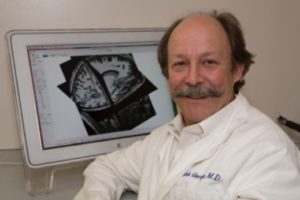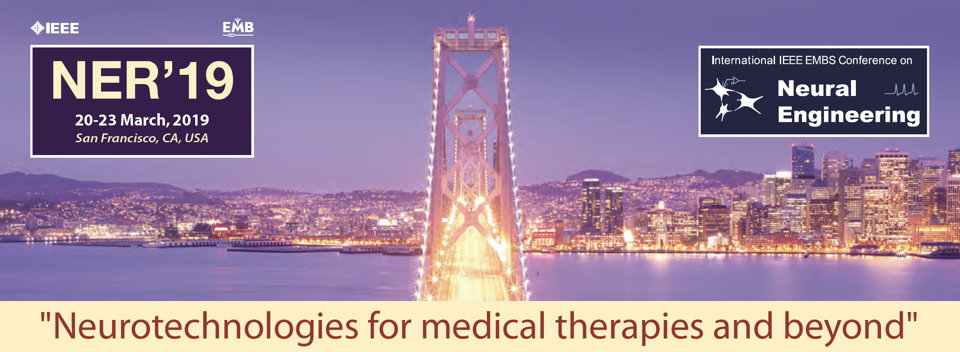Neural Engineering Meets Clinical Neuropsychiatry – Recent Successes, Some Failures, and a Peek into the Near Future
Approximately 30 years ago, when I began my career, we could finally begin to view the living human brain without sacrificing people. CT, then PET, then MRI allowed us to see and understand the brain, much like the rest of medicine had long been able to view other less interesting organs like the heart or liver. Adventurous scientists quickly quickly started using these brain maps enabled by the brain imaging revolution to guide tools to stimulate the brain. The fields of brain stimulation and neural engineering were born. Both invasive and non-invasive brain stimulation methods are now rapidly proliferating, with the technological advances far outstripping our clinical knowledge of where to apply them and in which diseases.
In this talk, I will outline the main brain stimulation methods in place and a few that are on the drawing board. I will talk largely about lessons learned in getting FDA approval for transcranial magnetic stimulation (TMS) for treating depression, and vagus nerve stimulation for treating epilepsy, depression and now other disorders. The rapid growth of brain stimulation startup companies in some ways resembles the California Gold Rush. I will use several examples to make the case that whether a technique makes it to FDA approval and general clinical use depends on many factors, only some of which are scientific. The future is bright for neural engineering and brain stimulation.
Biography
 As an undergraduate student in philosophy at Davidson College in Davidson, NC, Dr. George first began studying the relationship between mind and brain, or brain/behavior relationships. He has continued this interest throughout his career with a focus on using brain imaging and brain stimulation to understand depression and devise new treatments.
As an undergraduate student in philosophy at Davidson College in Davidson, NC, Dr. George first began studying the relationship between mind and brain, or brain/behavior relationships. He has continued this interest throughout his career with a focus on using brain imaging and brain stimulation to understand depression and devise new treatments.
He received his medical degree from the Medical University of South Carolina in Charleston in 1985, where he continued with dual residencies in both neurology and psychiatry. He is board certified in both areas. Following his residency training he worked for one year (1990-91) as a Visiting Research Fellow in the Raymond Way Neuropsychiatry Research Group at the Institute of Neurology, Queen Square, London, England. He then moved to Washington, DC, working with Dr. Robert Post in the Biological Psychiatry Branch of the Intramural National Institute of Mental Health (NIMH). During his 4 years at NIMH he was one of the first to use functional imaging (particularly oxygen PET) and discovered that specific brain regions change activity during normal emotions. He then started using imaging to understand brain changes that occur in depression and mania, a quest that he and many others are still pursuing. This imaging work directly led to his pioneering use of a non-invasive brain stimulation method, transcranial magnetic stimulation (TMS), as a probe of neuronal circuits regulating mood, and to clinical trials using TMS as an antidepressant. In 1993 while at the NIMH, he discovered that daily prefrontal rTMS over several weeks could treat depression and ever since he has worked to grow the science of TMS, both in terms of how it works in the brain, and in critically evaluating its therapeutic applications, especially in the area of treating depression. In June 1998 at MUSC, he also helped pioneer another new treatment for resistant depression, vagus nerve stimulation (VNS). This was FDA approved in 2006. He and his group have used MRI imaging to understand VNS brain effects.
He is a world expert in brain stimulation, and depression, and is the editor-in-chief of a new journal he launched with Elsevier in 2008 called, Brain Stimulation: Basic, Translation and Clinical Research in Neuromodulation. He has been continuously funded by NIH and other funding agencies since his fellowships. He has received both a NARSAD Young Investigator and Independent Investigator Award to pursue TMS research in depression. He has received numerous international awards including the NARSAD Klerman Award (2000), NARSAD Falcone Award (2008) and the Lifetime Achievement Award (2007) given by the World Federation of Societies of Biological Psychiatry (WFSBP). In 2009 US News and World Report named him one of 14 ‘medical pioneers who are not holding back’. He is on several editorial review boards and NIH study sections, has published over 400 scientific articles or book chapters, and has written or edited 6 books.
